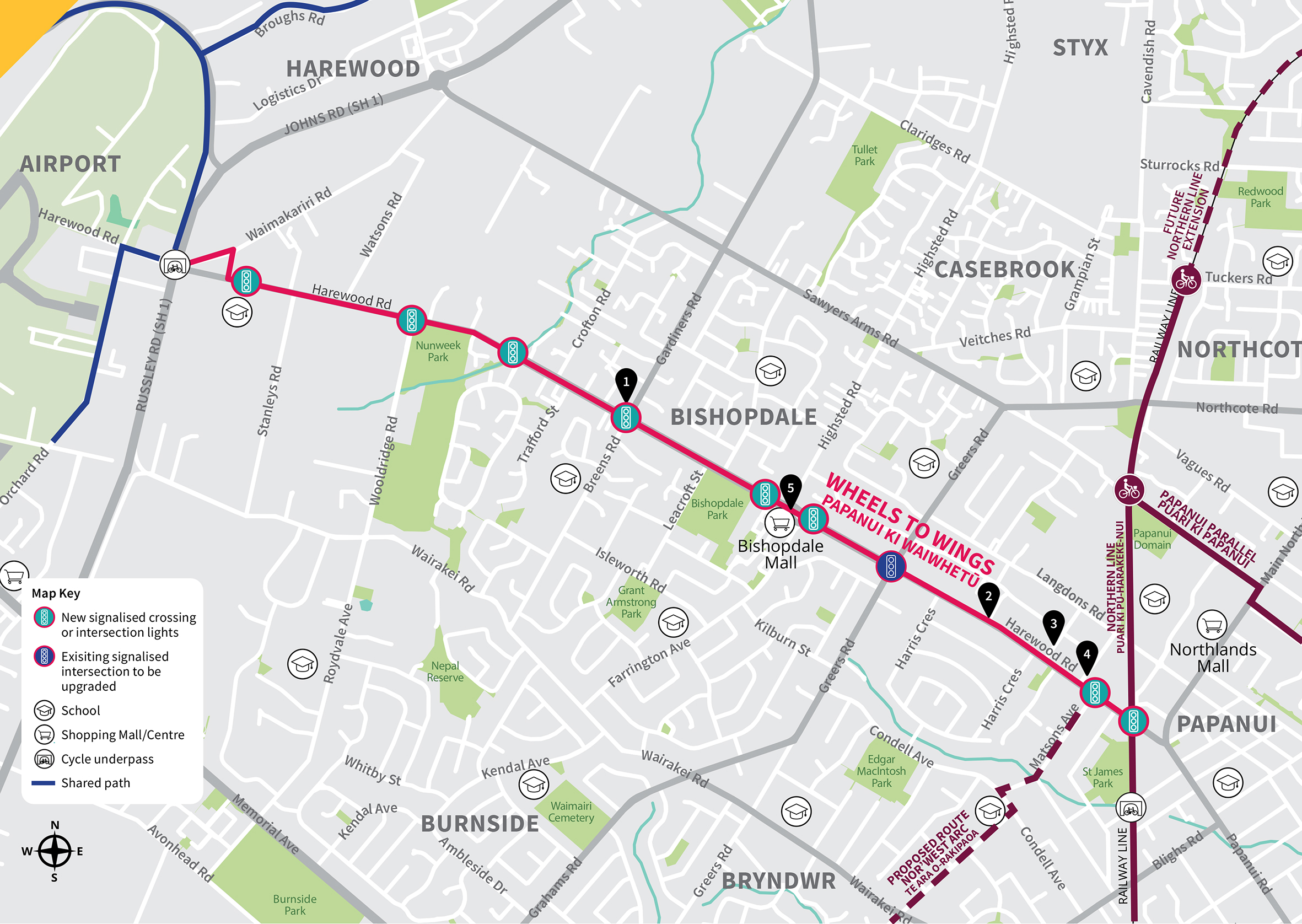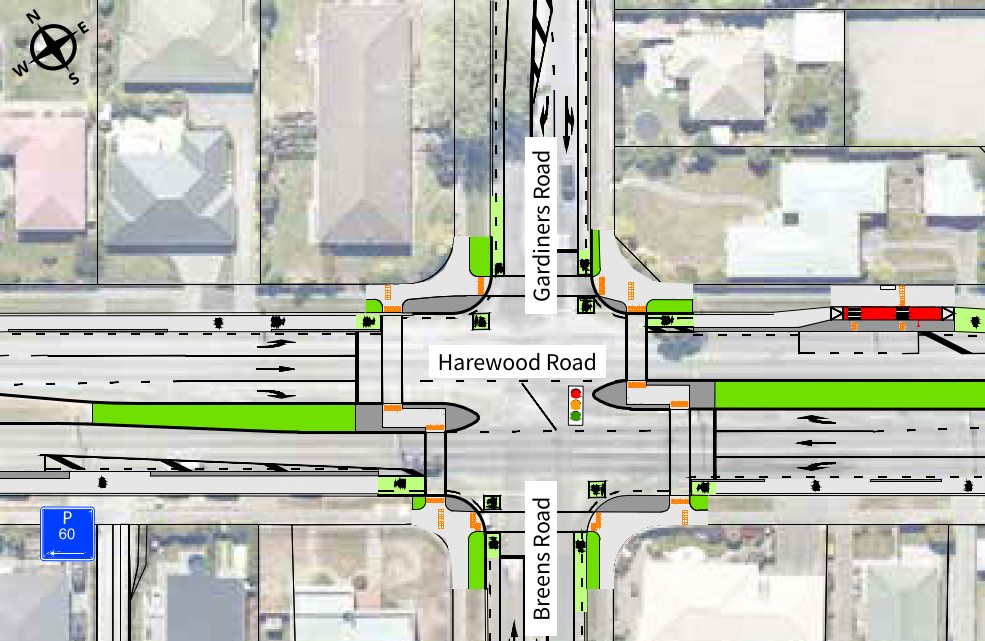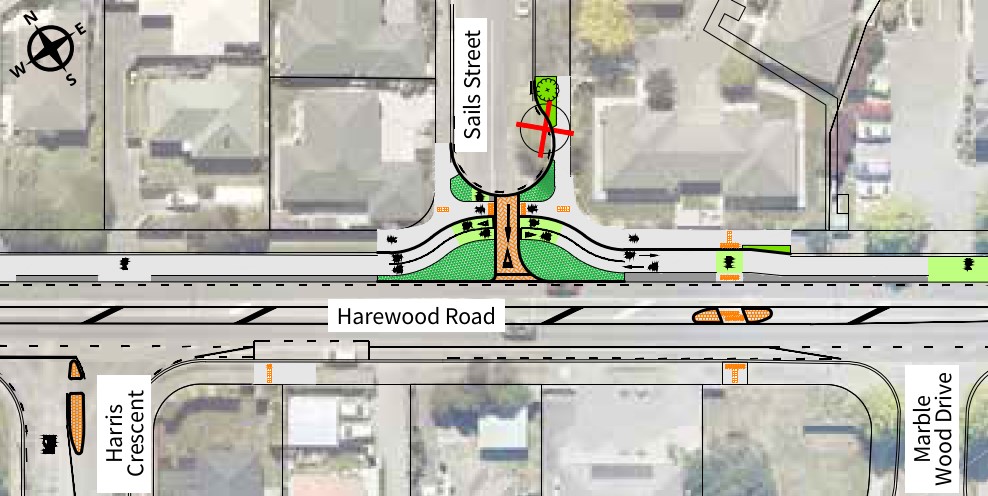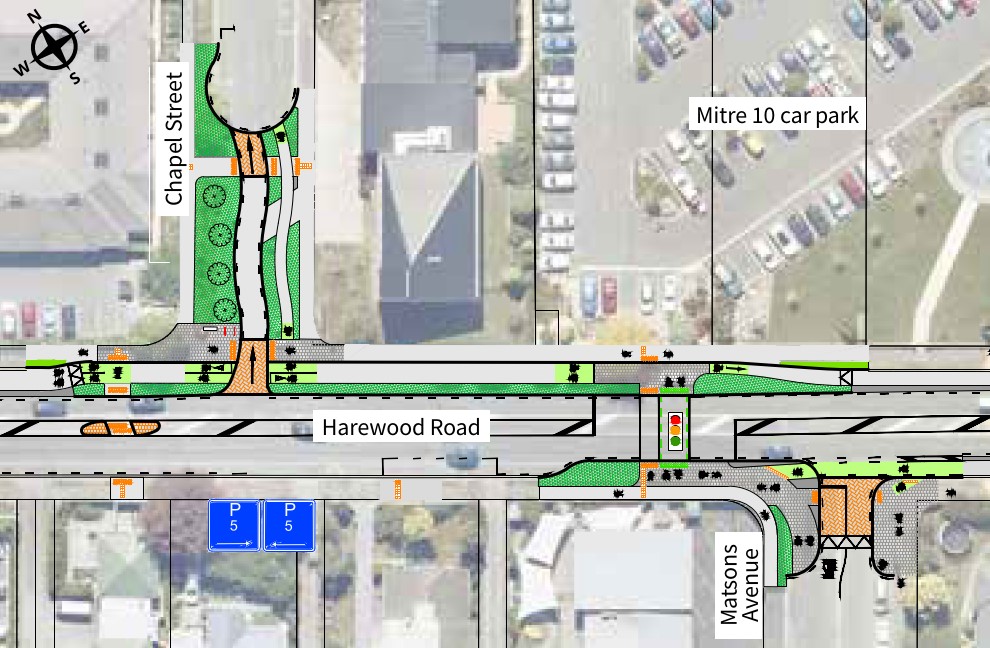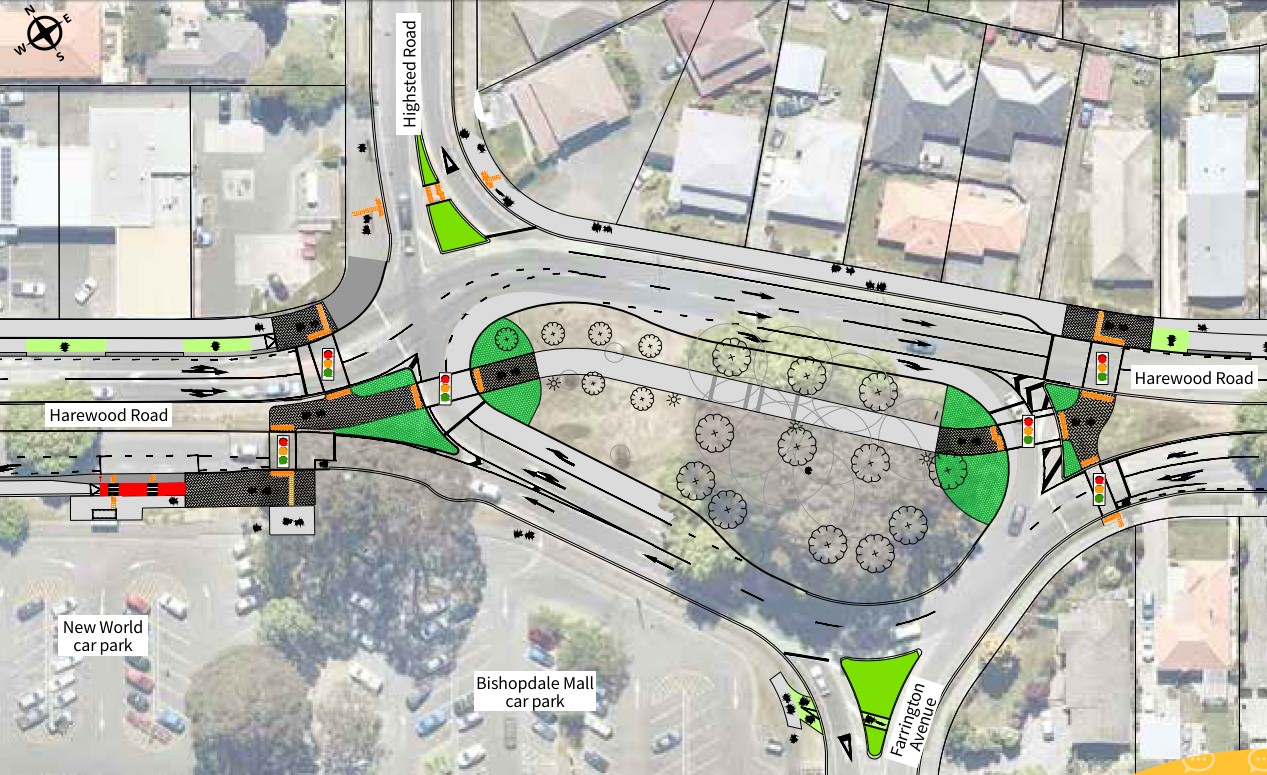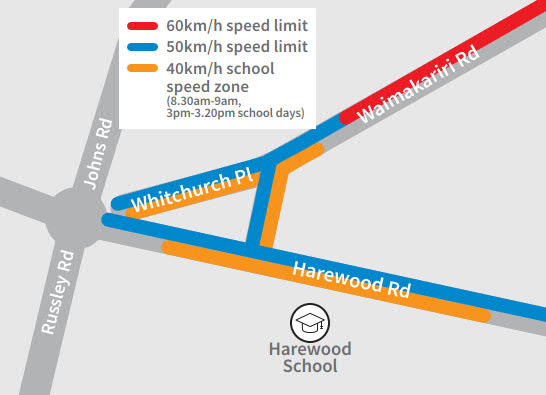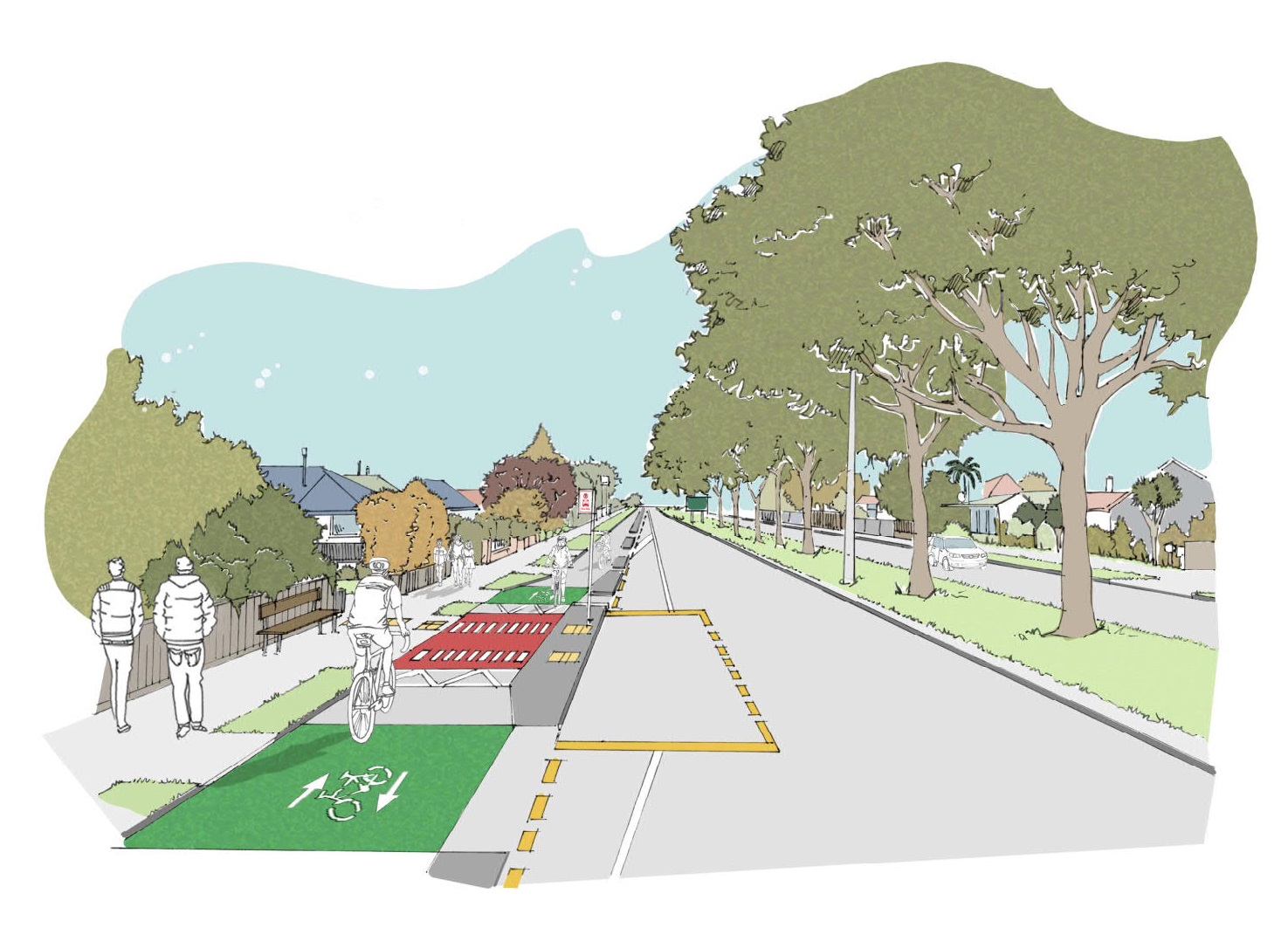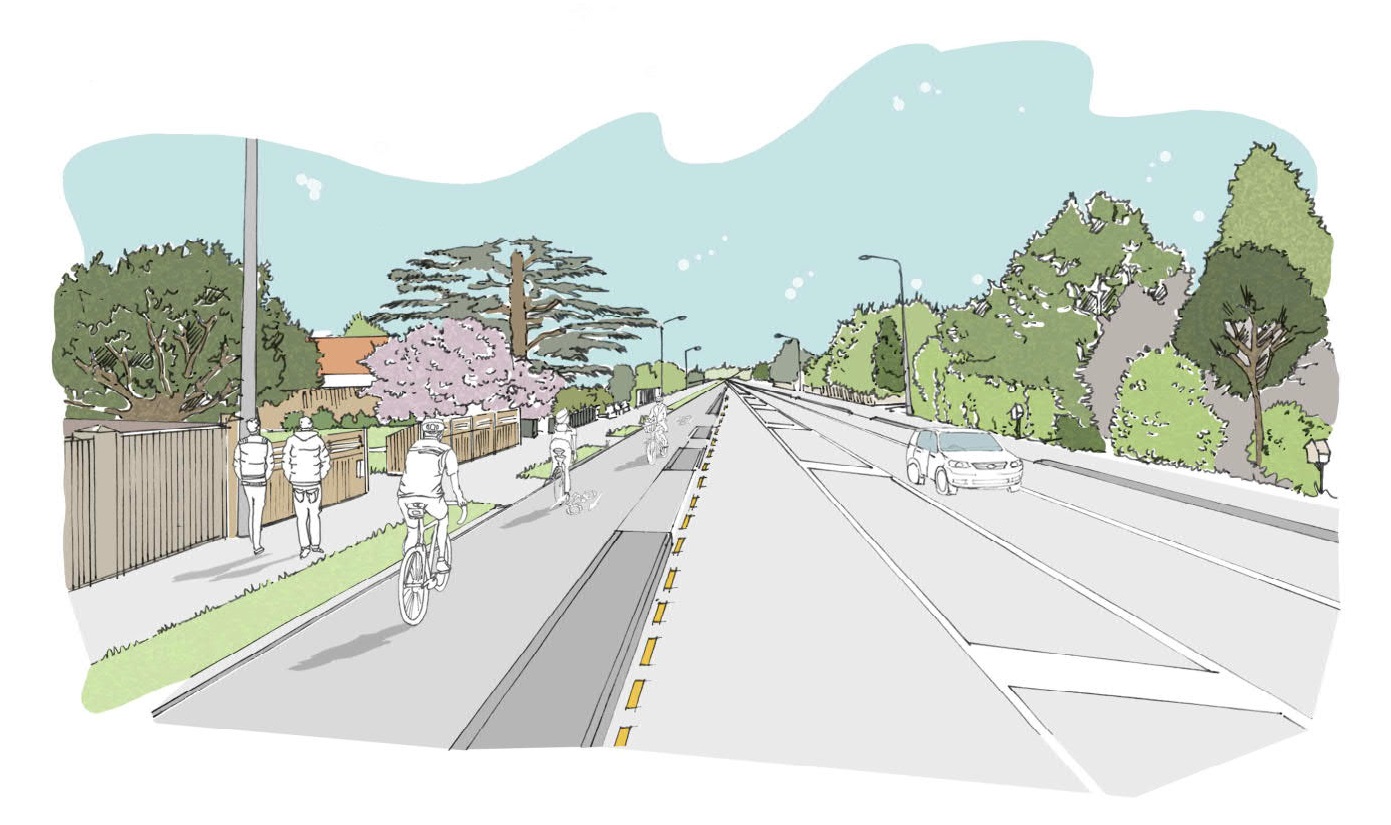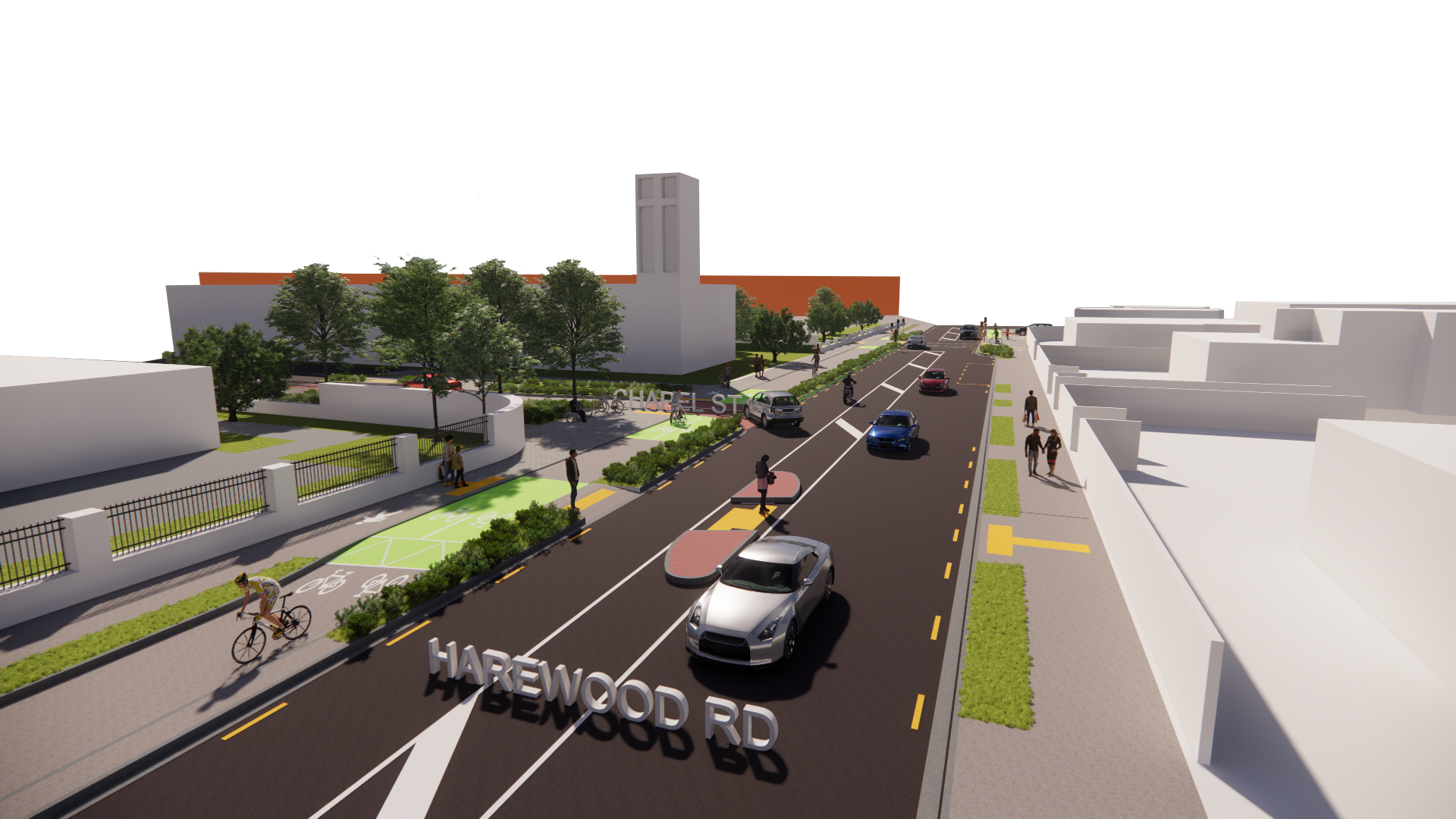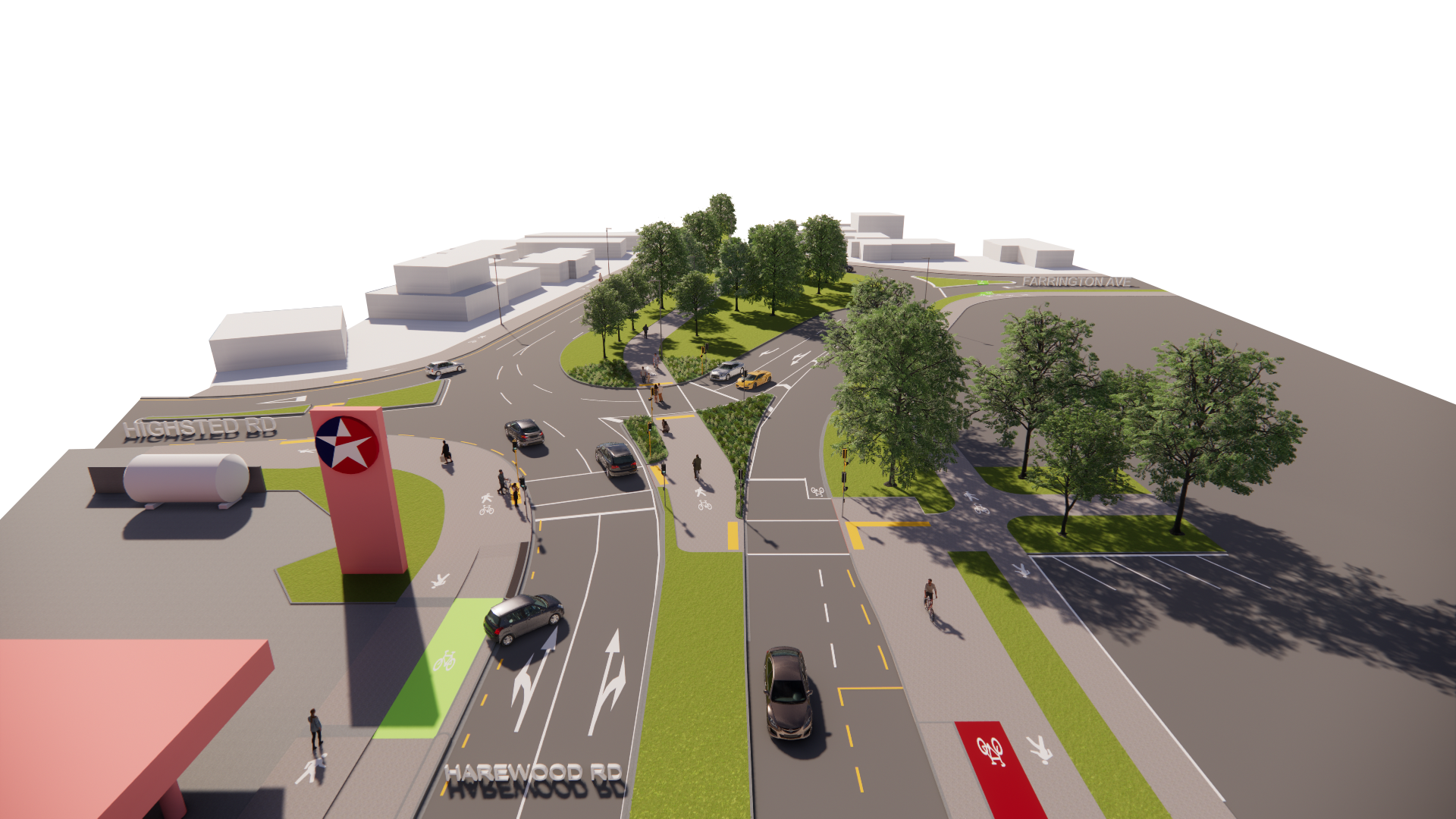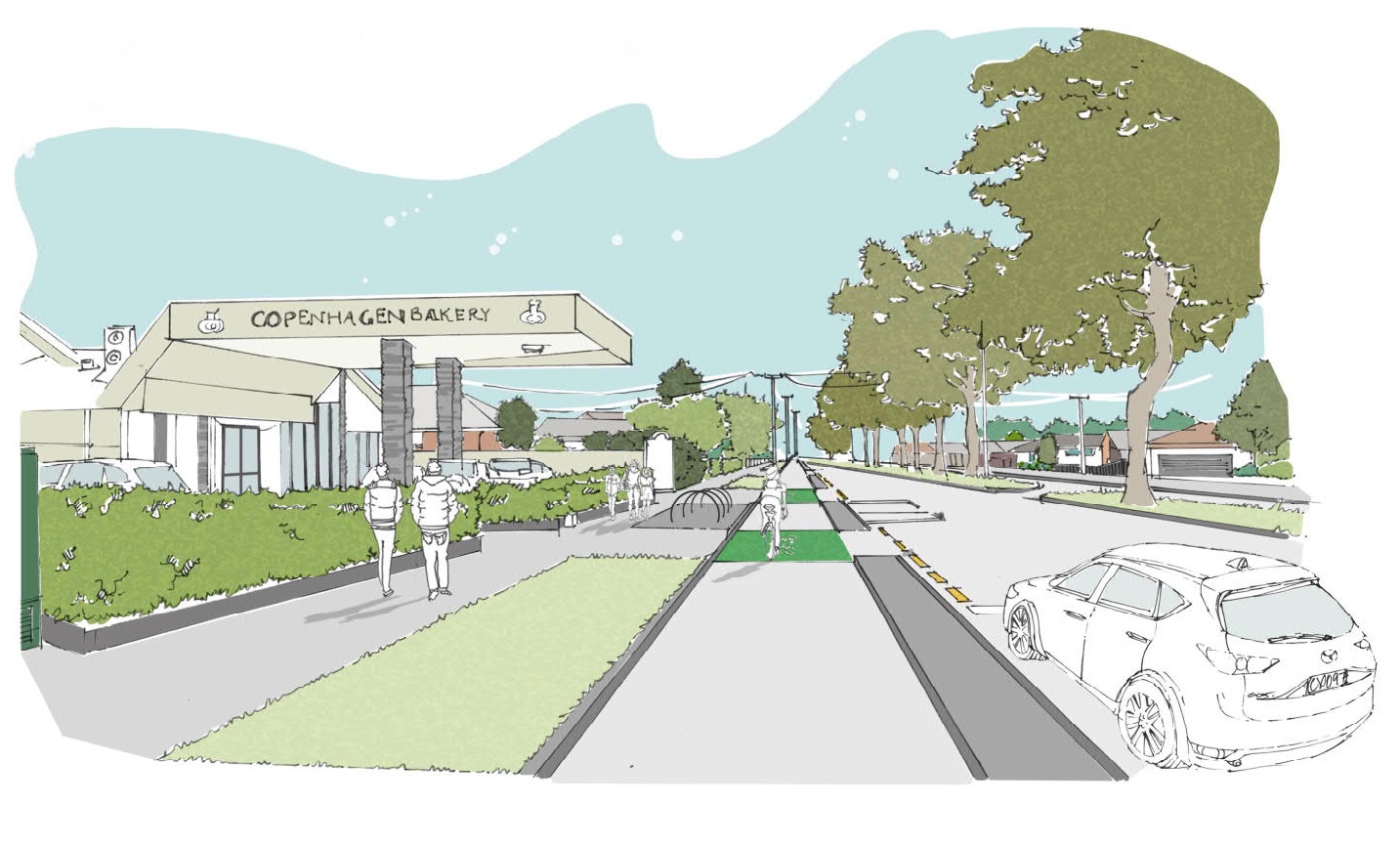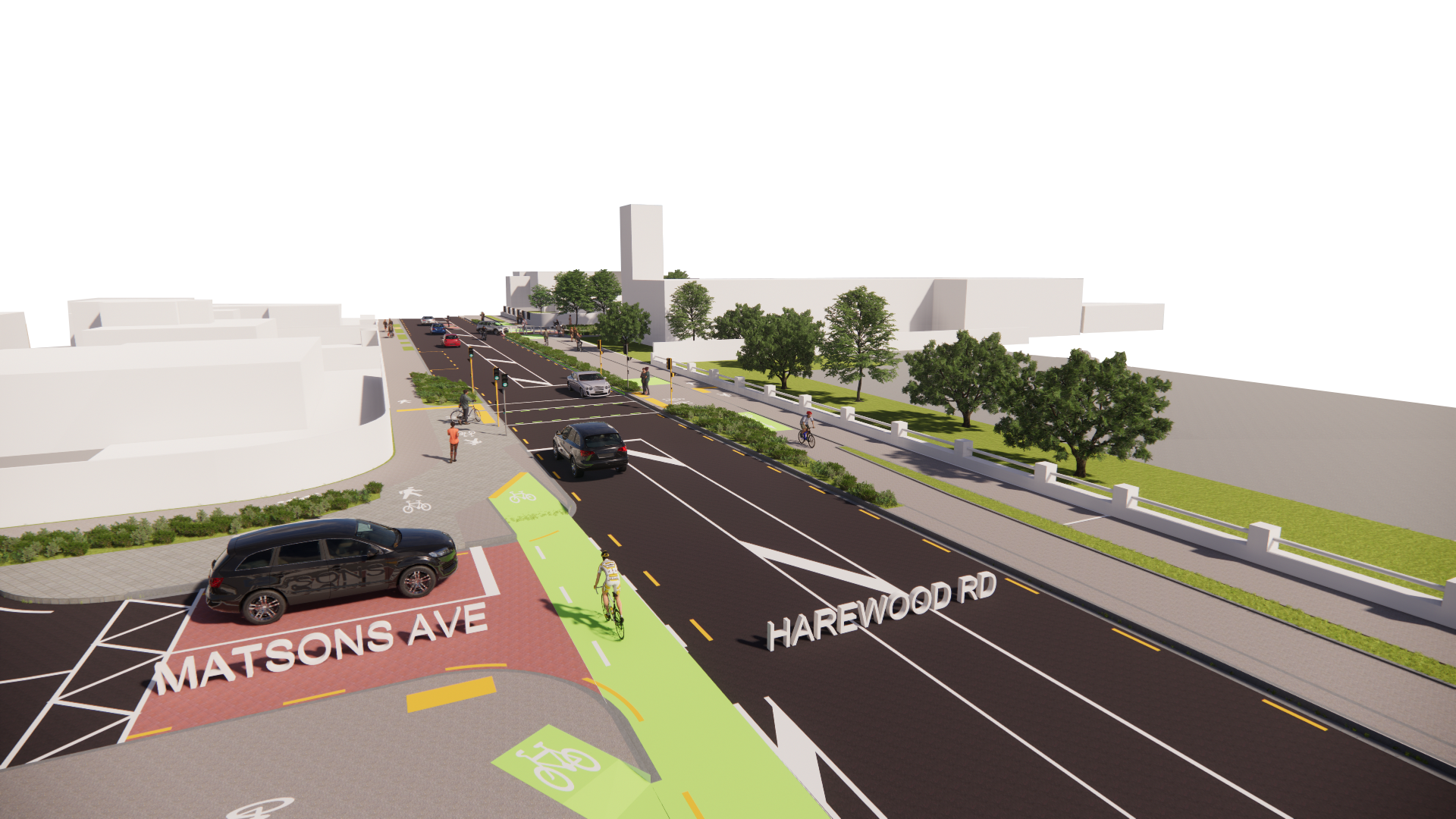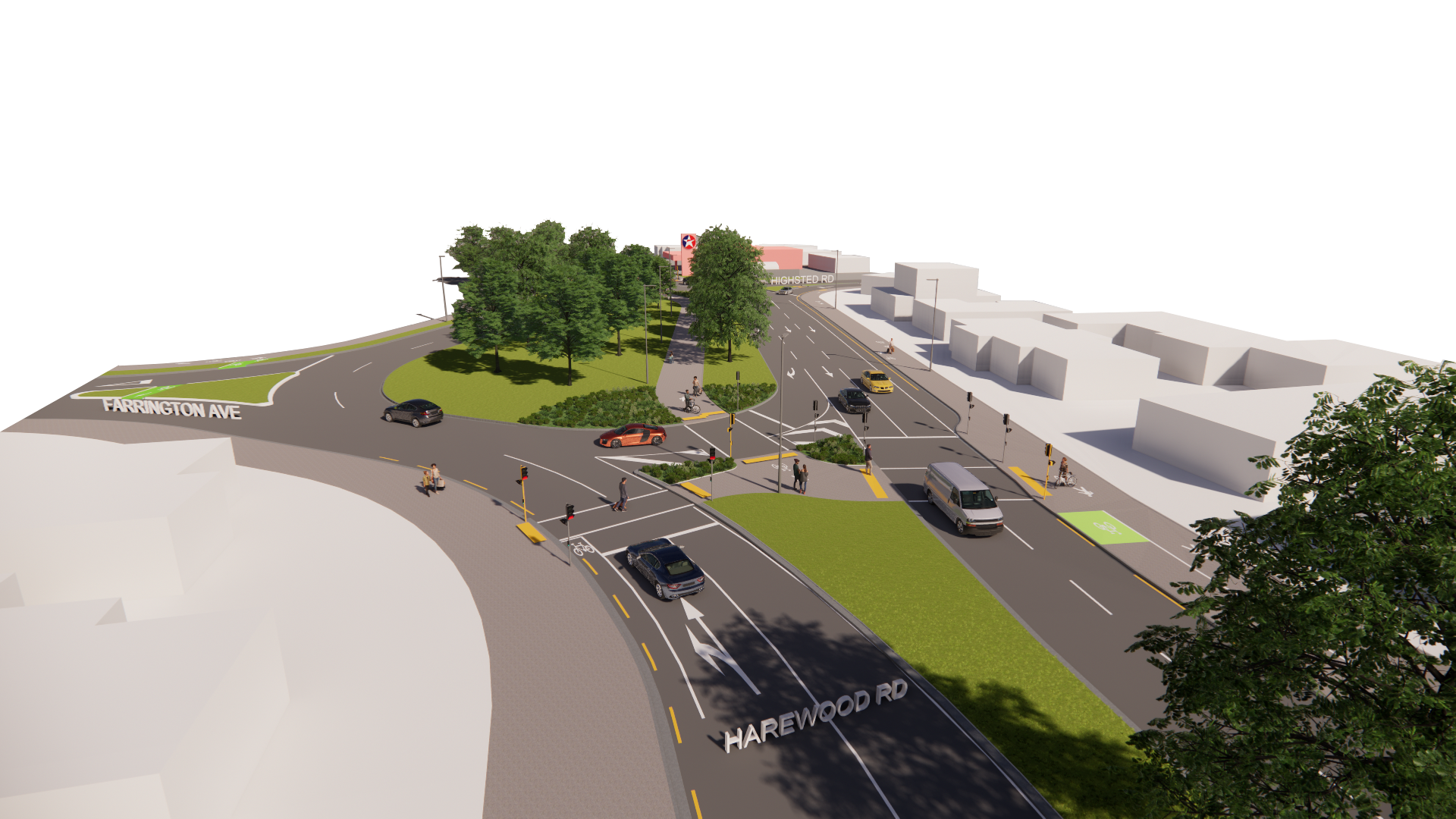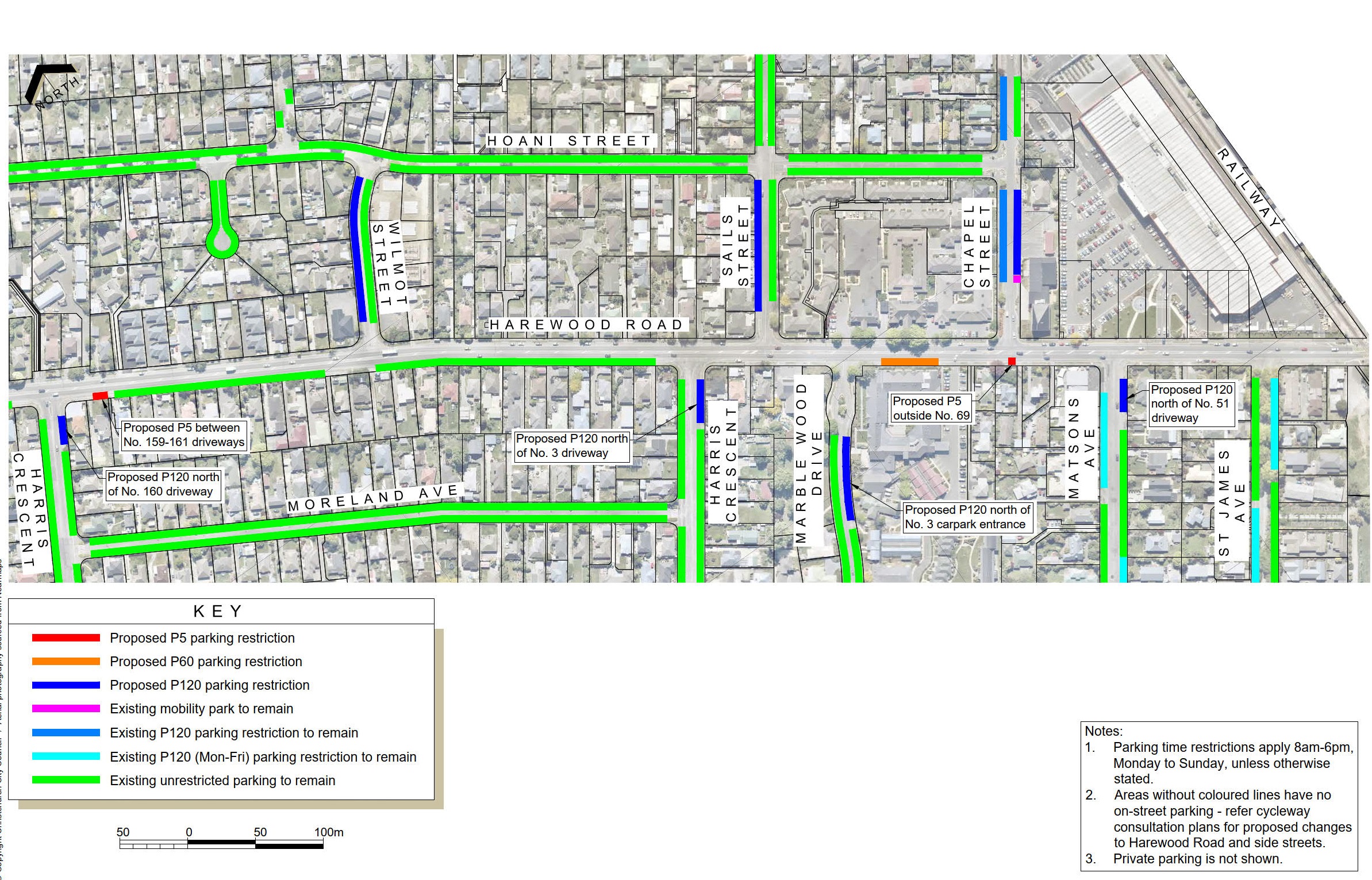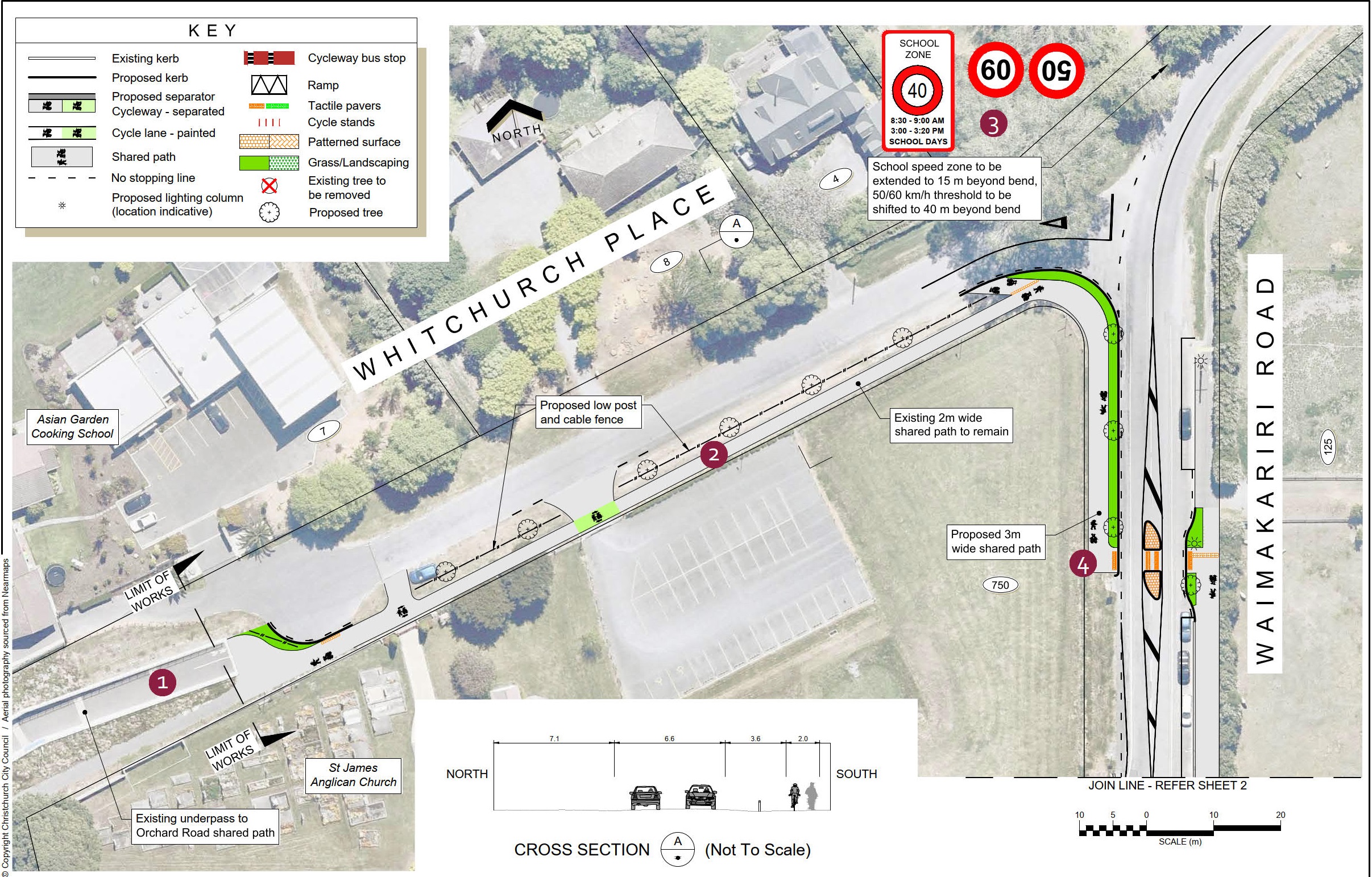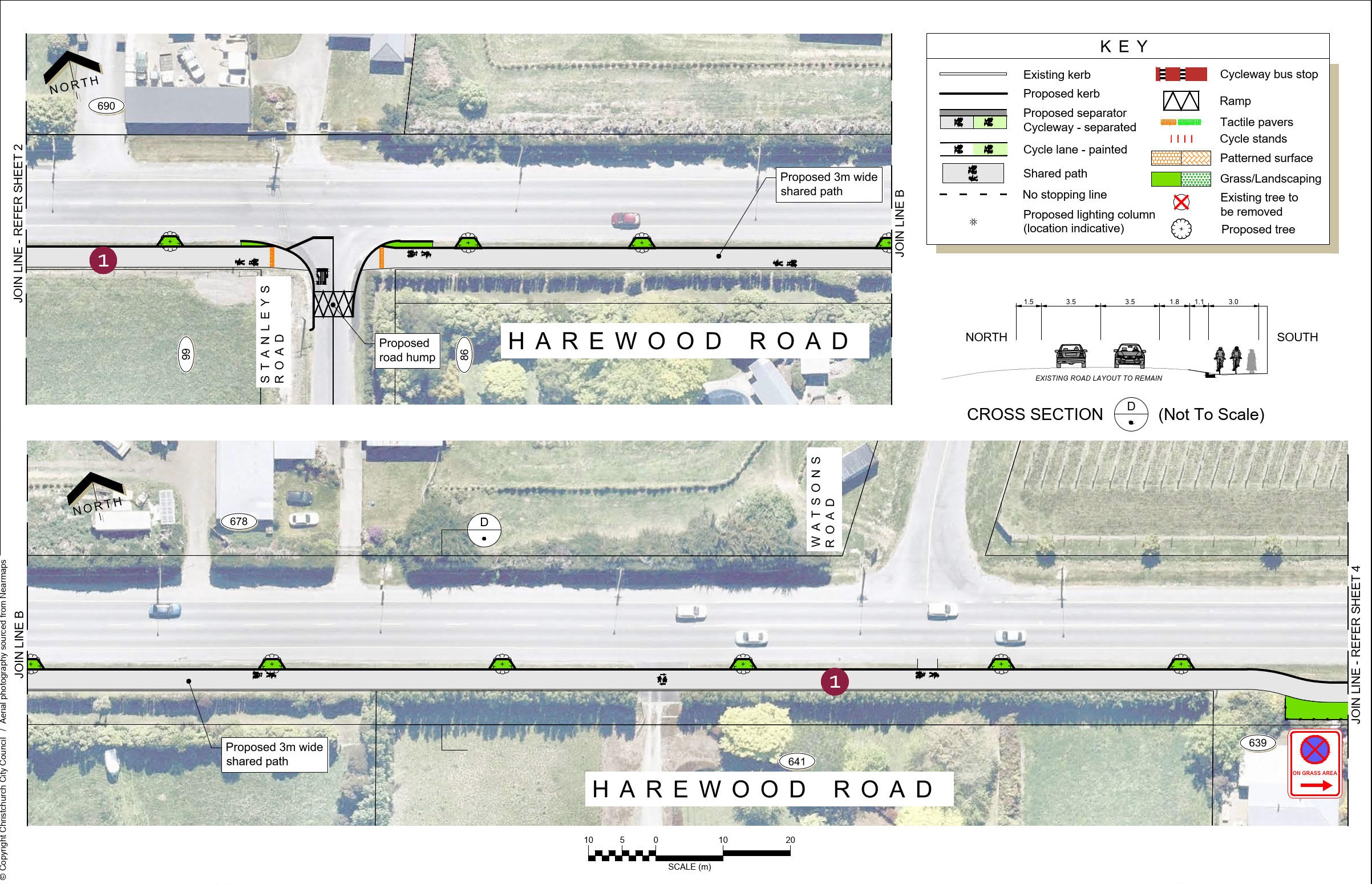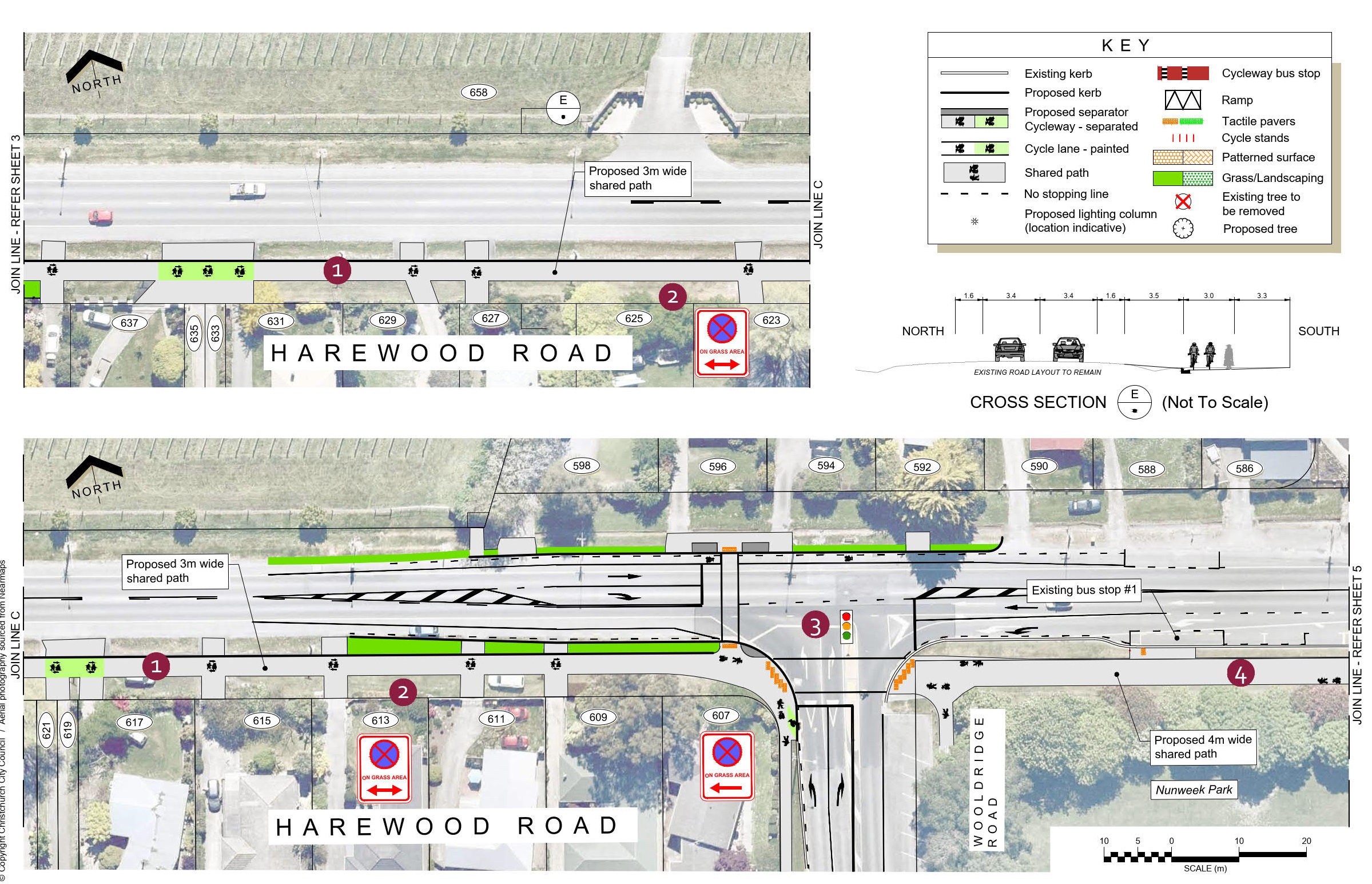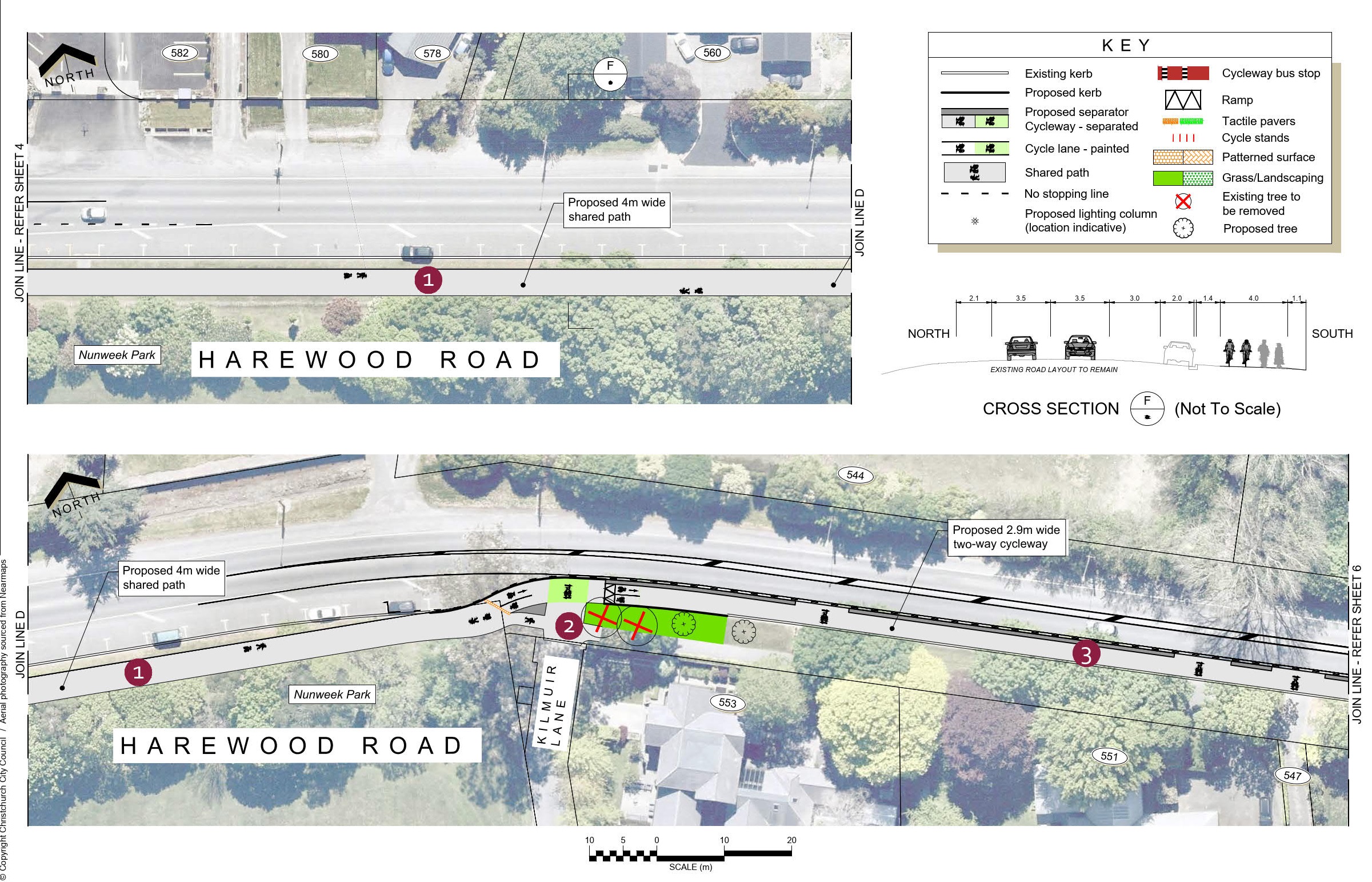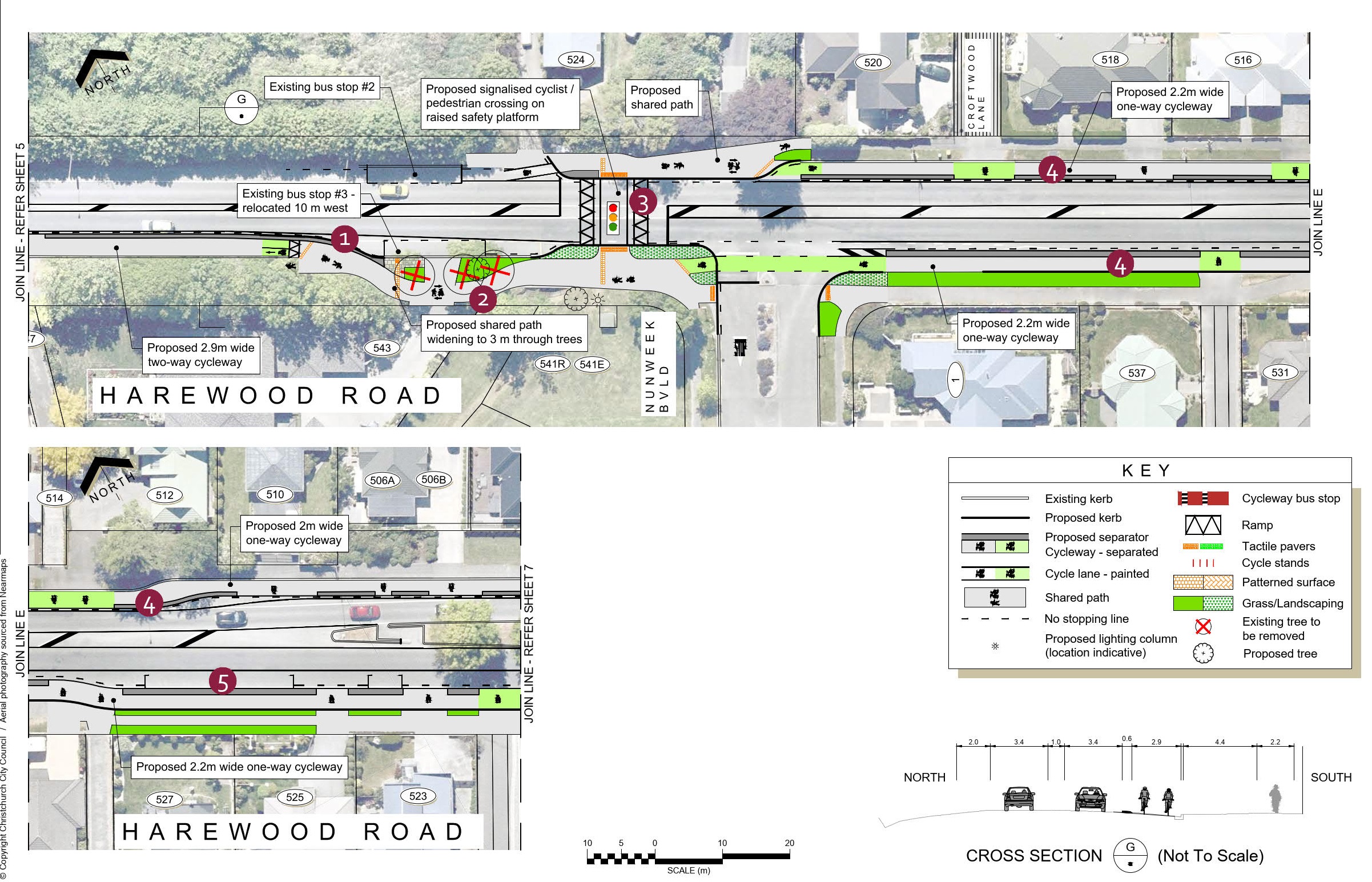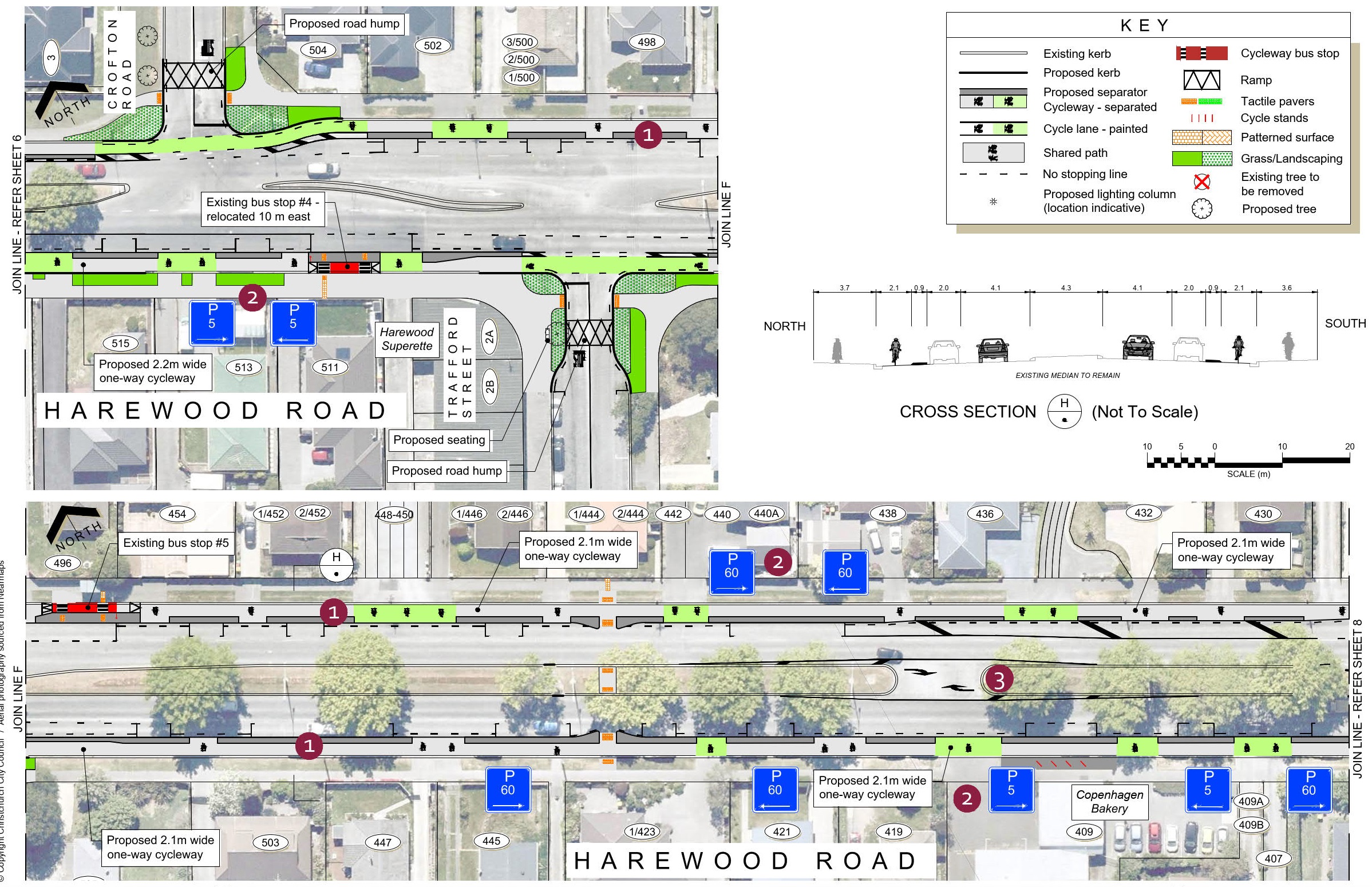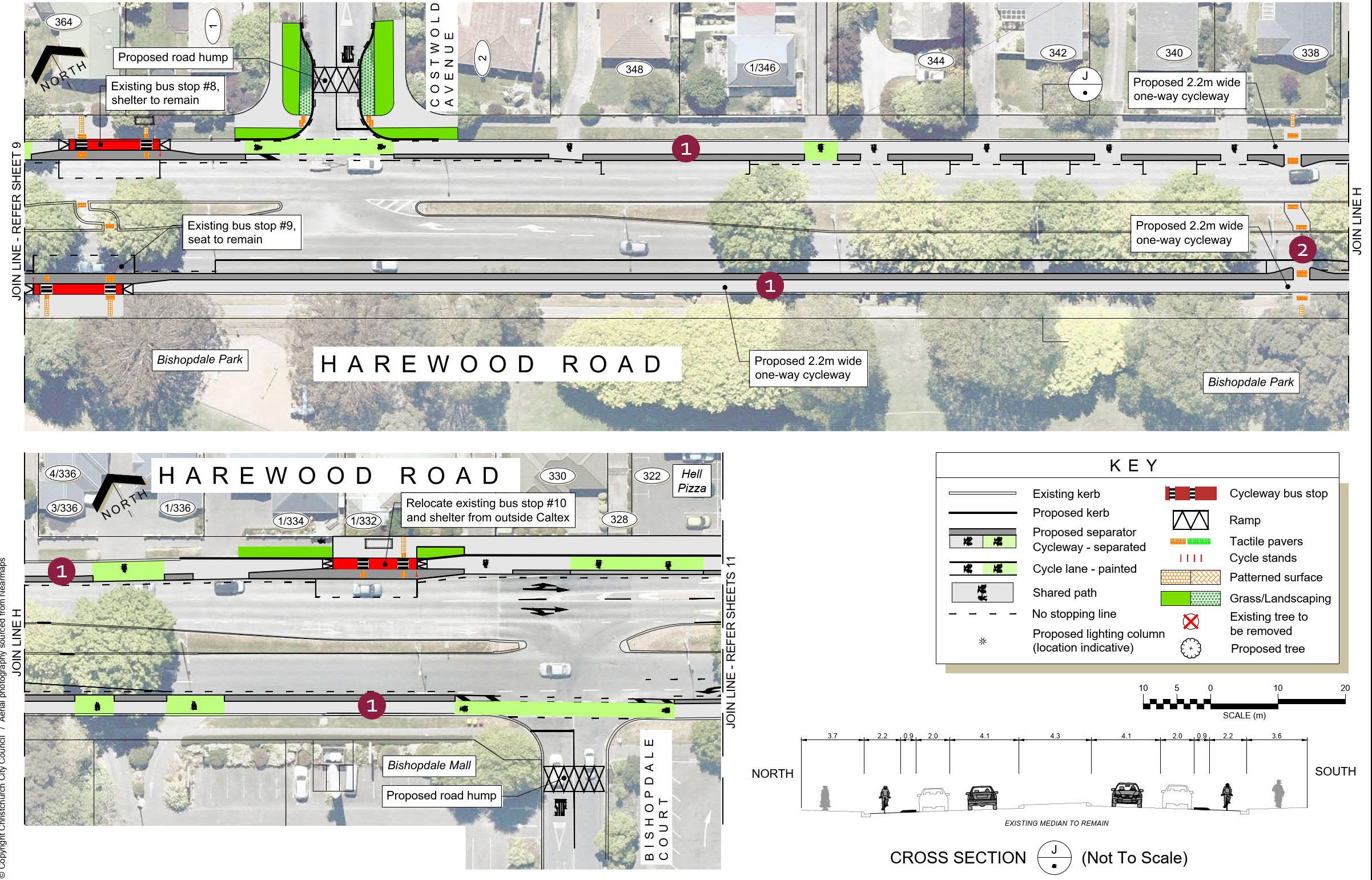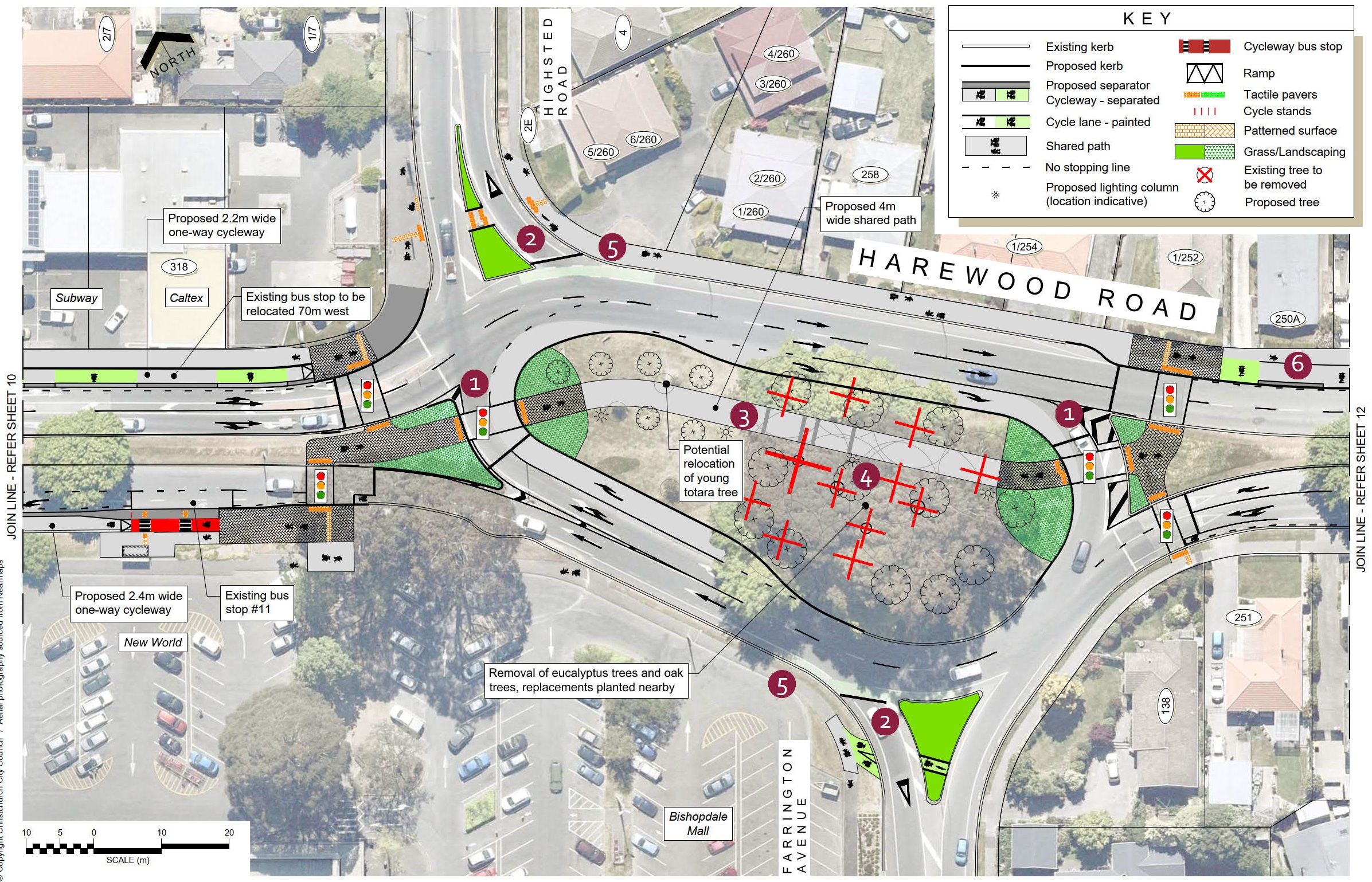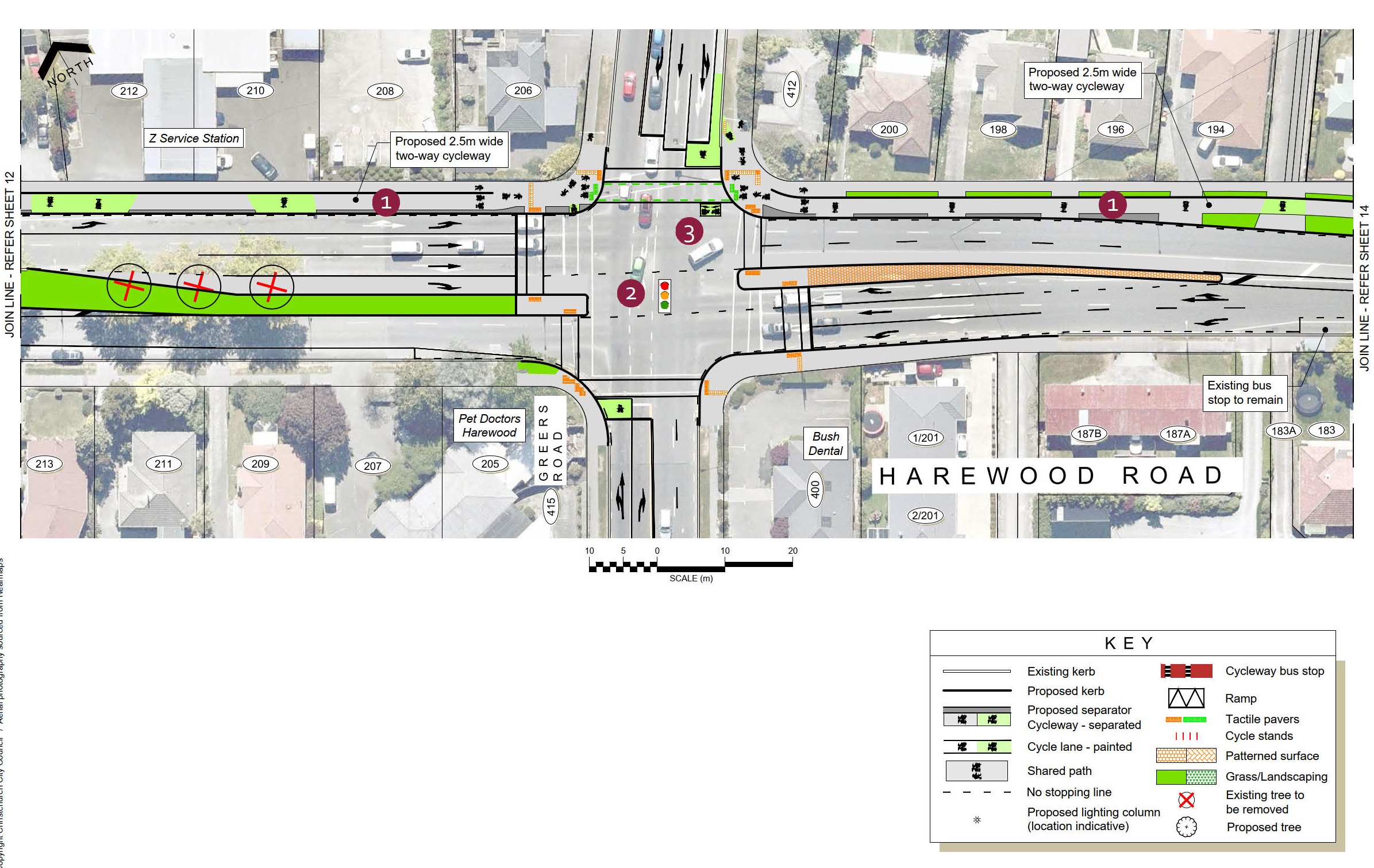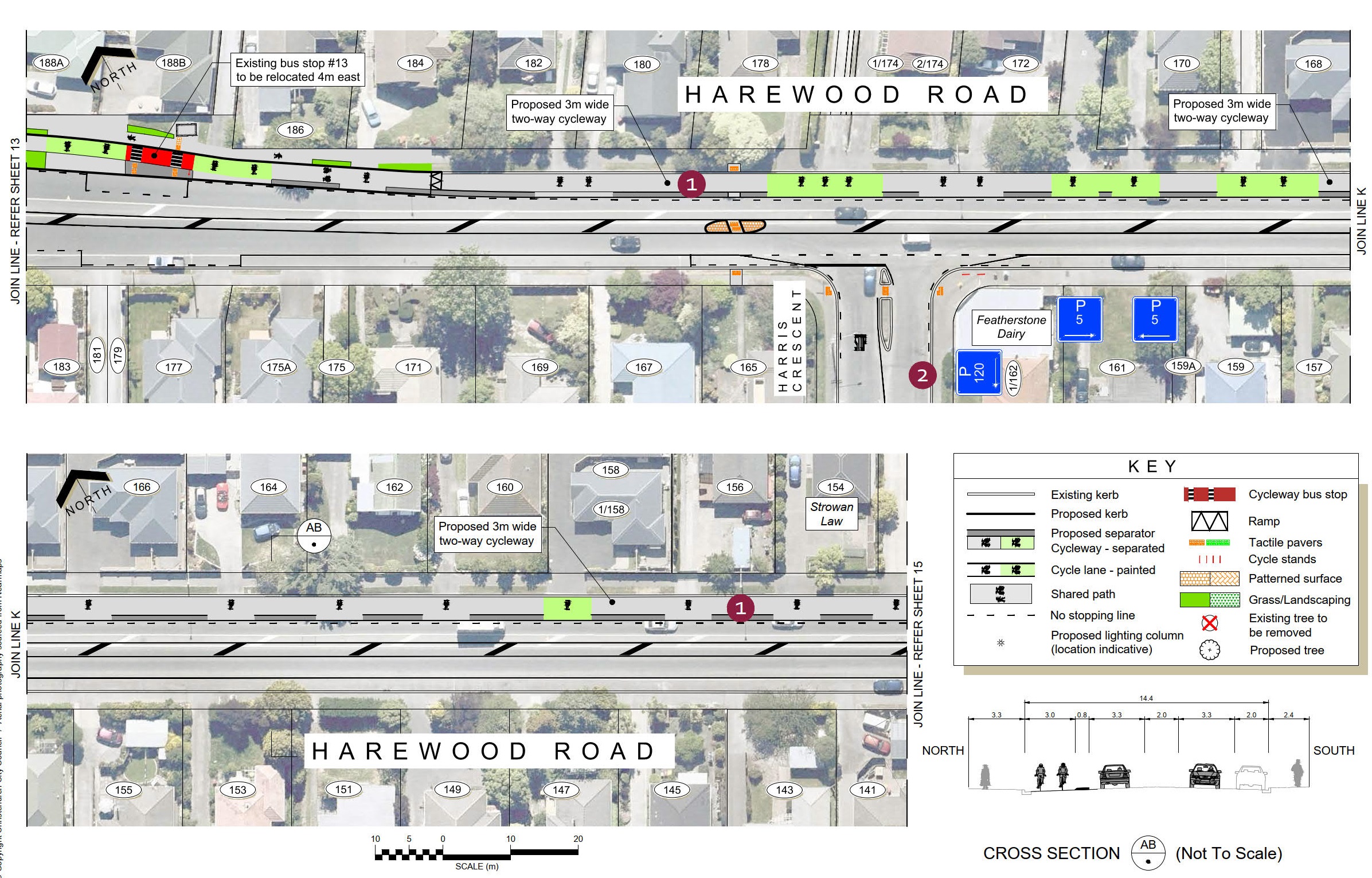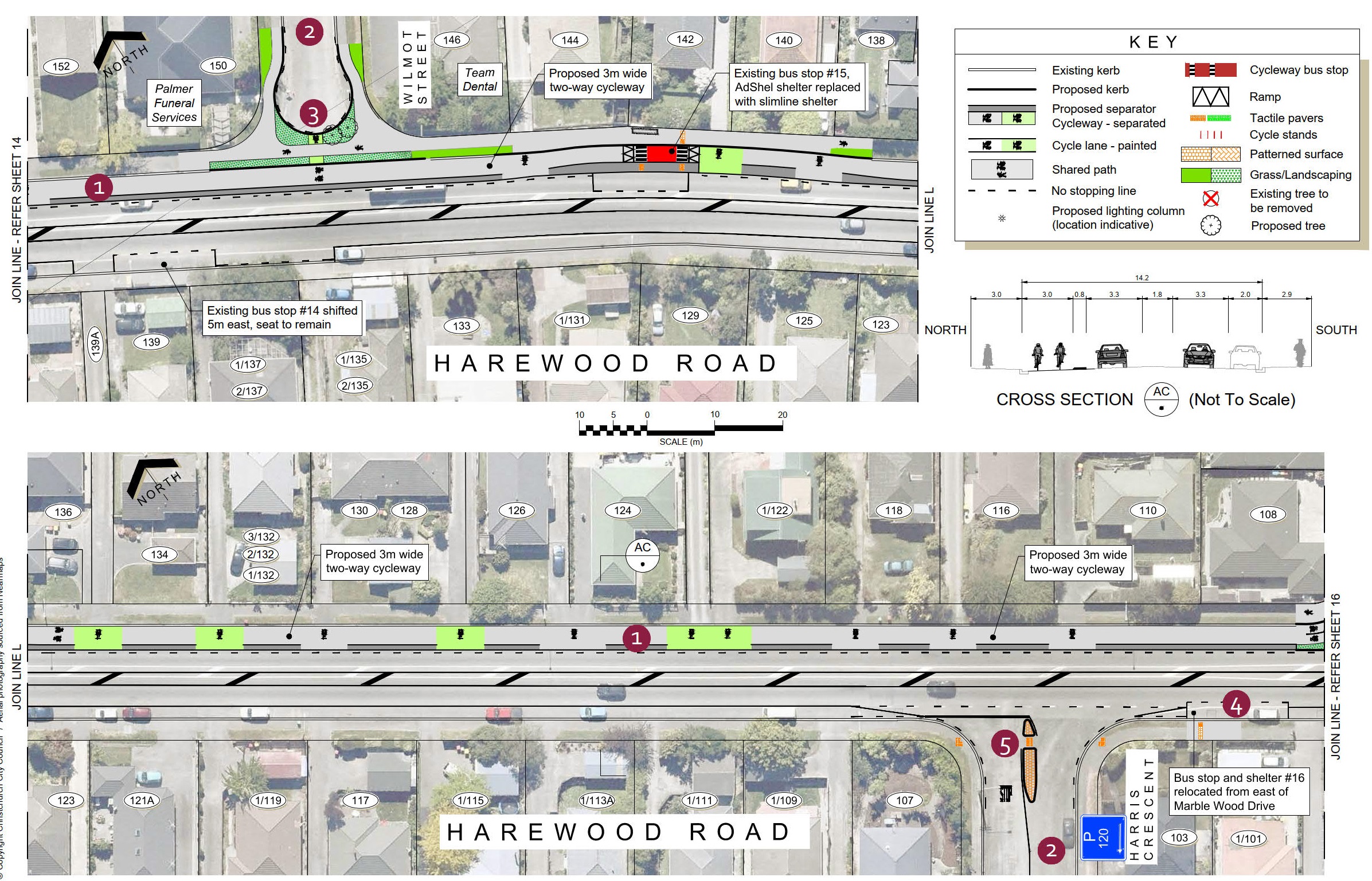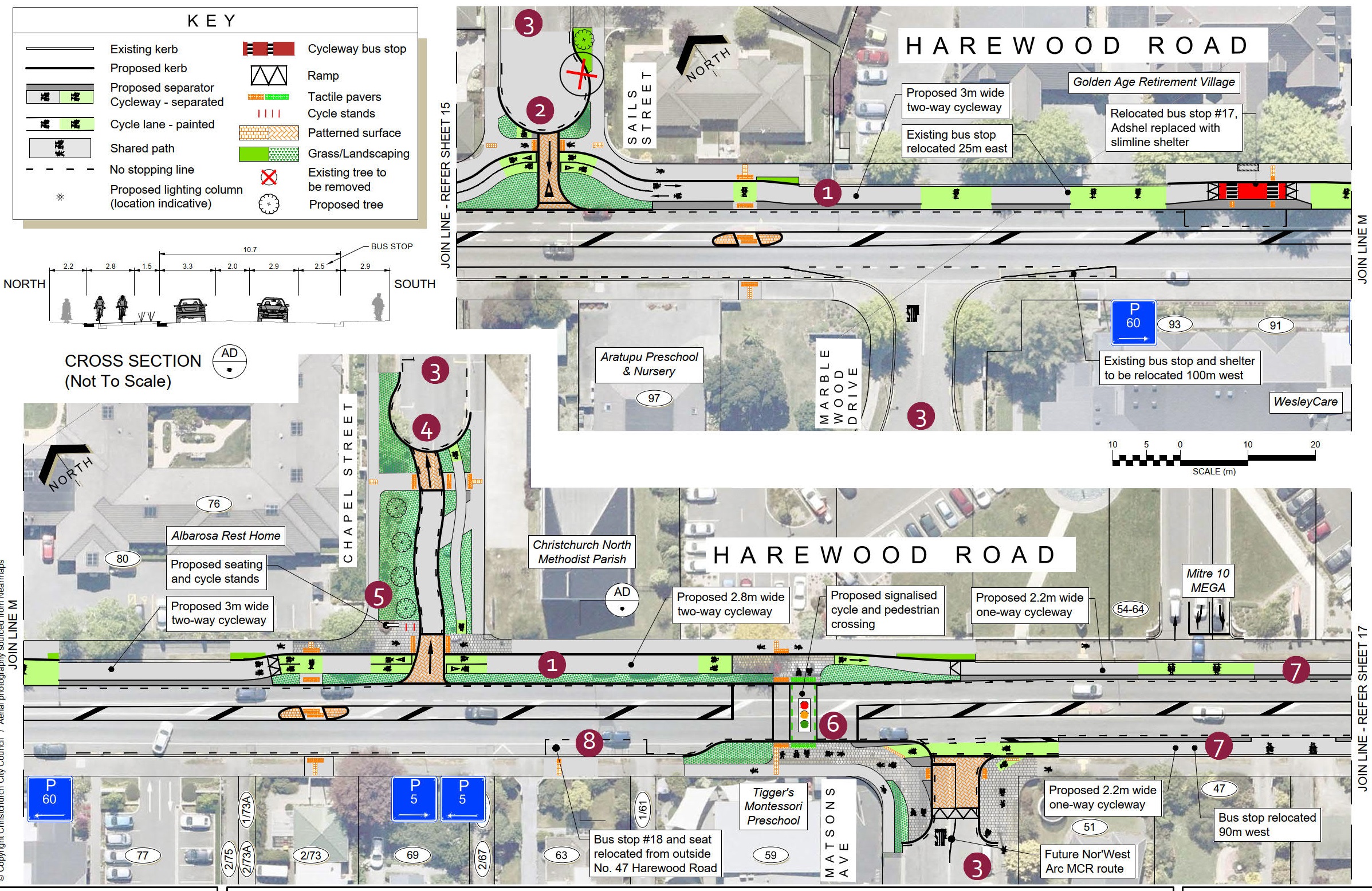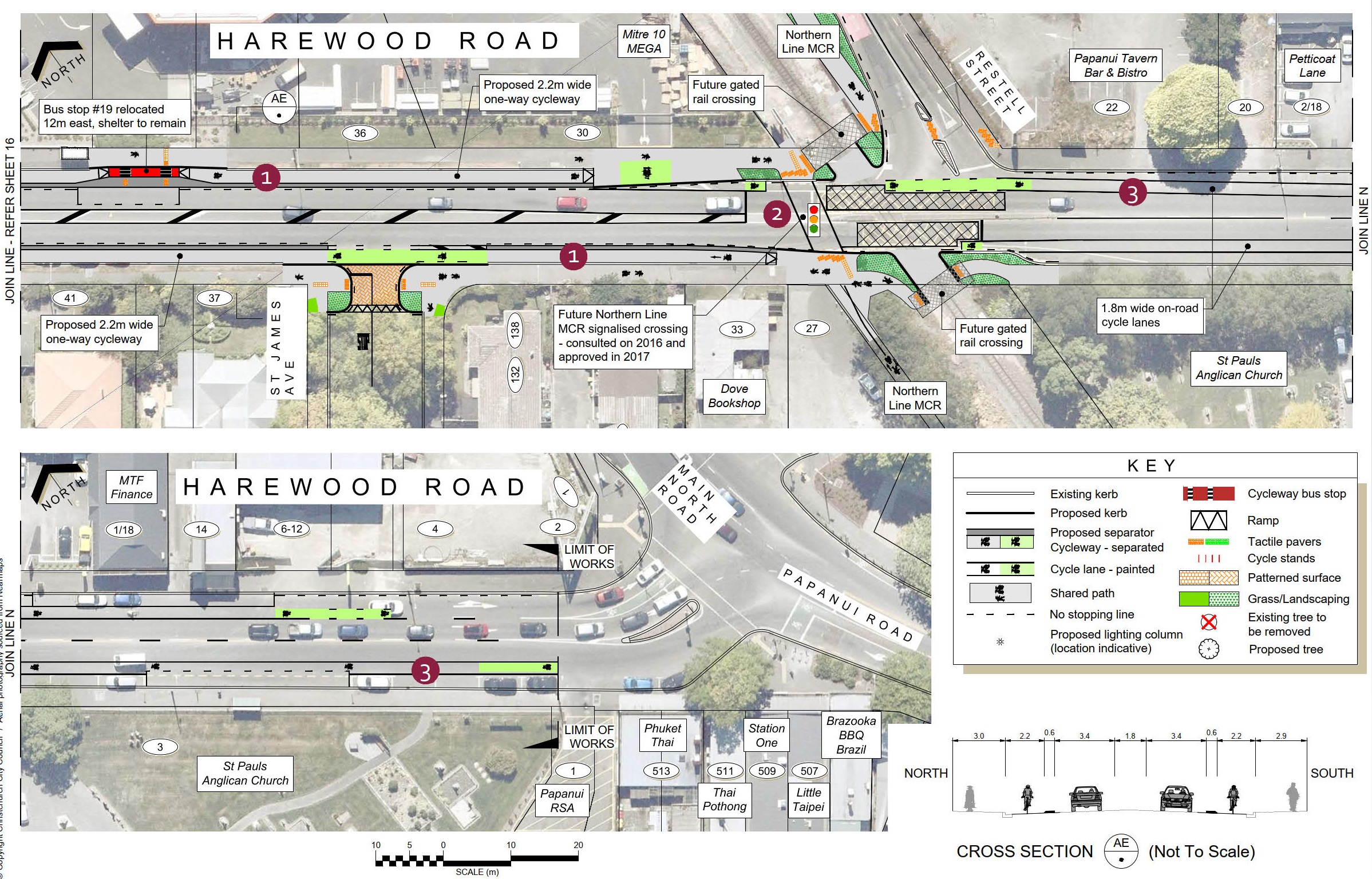The Wheels to Wings – Papanui ki Waiwhetū route can be divided into the following six sections:
- Whitchurch Place, Waimakariri Road, and Harewood Road up to Nunweek Boulevard Widening of the existing shared paths and construction of a two-way separated cycleway between Kilmuir Lane and Nunweek Boulevard, along with improved road crossings and intersections.
- Harewood Road from Nunweek Boulevard to the Bishopdale Roundabout One-way separated cycleways on each side of the road. This will require the removal of one traffic lane in each direction along the four-lane section of Harewood Road and the removal of some on- street parking.
- Bishopdale Roundabout New traffic signals at the east and west ends of the Bishopdale Roundabout will provide crossings for people cycling and walking through the roundabout and across Harewood Road, as well as controlling vehicles coming into the roundabout from Harewood Road.
- Harewood Road from the Bishopdale Roundabout to Greers Road A two-way separated cycleway is proposed on the northern side of Harewood Road. This will require the removal of adjacent on- street parking and one traffic lane. Additional on-street parking will be provided on the southern side of the central median.
- Harewood Road from Greers Road to Matsons Avenue A two-way separated cycleway is proposed on the northern side of Harewood Road, removing the adjacent on-street parking. Some restrictions to vehicle access at side roads are proposed.
- Harewood Road from Matsons Avenue to Northern Line One-way separated cycleways are proposed on each side of Harewood Road. This will result in the removal of on-street parking on both sides of the road.
- Harewood Road reduced from four lanes to two lanes.
- New traffic signals at Harewood/Gardiners/Breens intersection and Wooldridge/HarewoodRoad intersection.
- Traffic signals at each end of the Bishopdaleroundabout.
- New signalised crossings at HarewoodPrimary School, Nunweek Boulevard, and Harewood Road near Matsons Avenue.
- Changes to vehicle access on Wilmot Street, Sails Street and Chapel Street at Harewood Road.
Route maps
Map 1 Waimakariri Road end of Harewood Road [PDF, 11 MB]
Map 2 mid section of Harewood Road [PDF, 10 MB]
Map 3 east end of Harewood Road [PDF, 8.5 MB]

